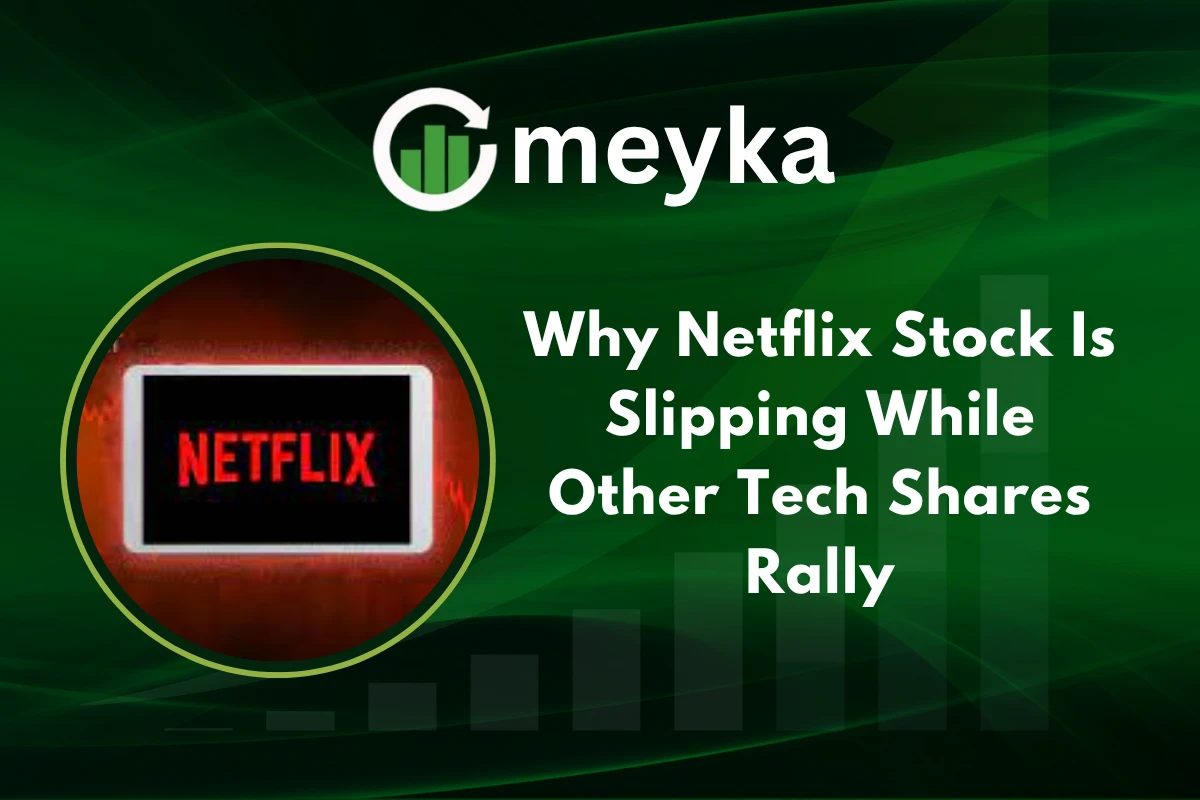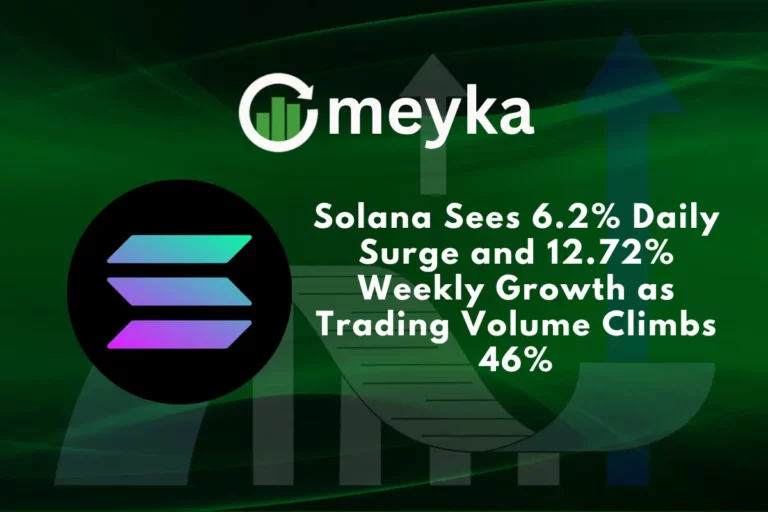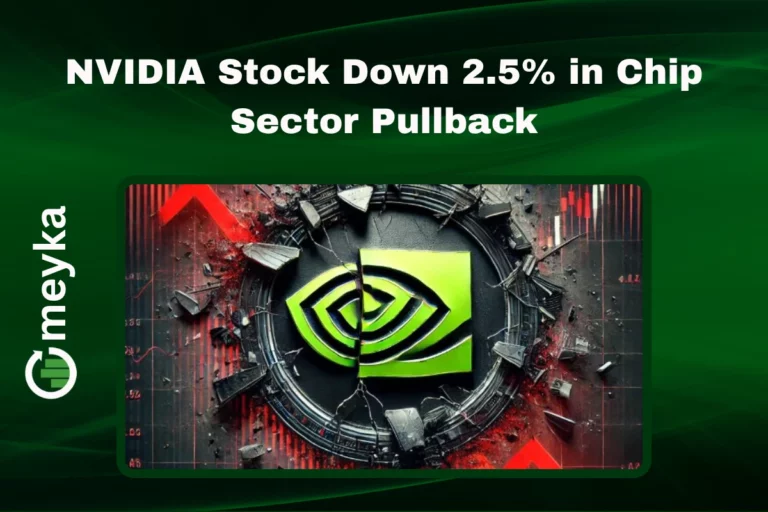Why Netflix Stock Is Slipping While Other Tech Shares Rally
Netflix shares have cooled off even as many large tech names climb. The company’s core growth story still matters, but investors are weighing subscriber trends, ad revenue progress, and rising competition.
This article explains why Netflix stock lags, what Wall Street says, and what traders should watch next.
Netflix Stock Declines Despite Tech Rally
Market Overview and Broader Tech Gains
The wider tech sector has rallied on AI optimism and strong cloud demand. Names like Microsoft, Nvidia, and Meta have led gains, buoying the Nasdaq overall. In that context, Netflix stock has underperformed in short windows, pulling attention because the rest of the sector looks stronger.
Netflix’s Performance in Contrast
Netflix (NFLX) rose strongly earlier in the year on revenue growth and ad-business gains, yet the shares have slipped for several sessions recently. LiveMint reported a three-day slide tied to political noise and market uncertainty, alongside broader rotation into cyclicals. That dip shows how Netflix can trade like a defensive tech name while investors favor cyclical winners.
Why is Netflix stock falling now? Investors worry about subscriber momentum and near-term headline risk, even as long-term fundamentals remain solid.
Why Netflix Stock Is Falling
Subscriber Slowdown and Market Concerns
Netflix’s growth depends on subscribers and ad revenue. While the company posted solid quarterly numbers earlier in the year, some data points suggest a slowing pace of new signups in key markets.
That cooling worries investors who priced much of next year’s growth into the stock already. Analysts watch subscriber trends closely because they feed future revenue and margin forecasts.
Rising Competition from Streaming Rivals
Competition is fierce. Disney+, Amazon Prime Video, and other regional players keep pushing content and ad options.
That increased choice pressures, pricing powe,r and retention. Netflix must keep spending on content while protecting margins, a balancing act the market scrutinizes. Competition raises costs and clouds the path to easy subscriber gains.
Wall Street Views on Netflix Stock
Analyst Opinions and Earnings Forecasts
Many analysts remain bullish for the long run, citing strong revenue growth and margin expansion. Some have raised 12-month targets, while others urge caution until subscriber momentum proves durable.
Nasdaq pieces note upbeat fundamental metrics but remind investors that expectations are high.
Tweets Reflecting Investor Sentiment
Social sentiment has been mixed. Some retail traders flag buy opportunities, others call for caution after recent drops. For example, a trader noted short-term resistance and flagged the three-day slide as a buying signal.
“Short-term pain, long-term gain,” read one online take, while others questioned whether headlines could knock momentum.
Should investors follow social media for decisions? Use social signals as color, not as the main thesis. They show sentiment, but fundamentals and cash flow matter more.
AI and Its Role in Market Forecasts
How AI Stock Research Is Changing Market Predictions
AI Stock research tools scan news, filings, and social media to flag real-time risk around companies like Netflix. These models help traders parse headlines quickly and estimate near-term price moves. The result is a faster reaction to subscriber news and policy changes.
Benefits of AI Stock Analysis for Investors
AI Stock Analysis speeds scenario testing. It models many outcomes and suggests hedging paths. That helps active funds and traders respond when a single headline causes a big swing. AI is not a crystal ball, but it improves decision speed.
The Impact of AI Stock in Financial Media
Newsrooms and data feeds tag stories with AI Stock to feed automated models. That indexing accelerates the flow of sentiment and factsinto trading systems, amplifying short-term moves.
Comparing Netflix Stock to Other Tech Giants
Apple, Amazon, and Meta Gains
Big tech gains have been driven by strong AI or cloud narratives. Microsoft and Nvidia, for example, benefit directly from AI infrastructure demand. Amazon and Meta show strength from advertising and cloud, respectively. These drivers differ from Netflix’s subscriber-driven revenue model.
Why Netflix Is the Outlier
Netflix depends more on content investment and subscriber retention than on enterprise AI or cloud contracts. When investors prize AI and cloud, Netflix can look less relevant to the immediate market theme, even if its fundamentals are improving. This positioning helps explain the divergence in stock moves.
Could Netflix rejoin the rally soon? Yes, if subscriber data improves or the ad business accelerates beyond expectations, Netflix stock can quickly re-rate.
What Investors Should Watch Next for Netflix Stock
Ad-Supported Model and Revenue Growth
Netflix’s ad-supported tier is a critical growth lever. Investors want clarity on ad revenue trends and pricing power. Double-digit ad growth would reassure markets that the company can expand monetisation while holding churn steady.
Long-Term Subscriber Trends and Global Expansion
The mix of mature and emerging market growth matters. If Netflix can sustain net adds in big markets and grow paid conversions in emerging regions, that supports higher valuation multiples. Keep an eye on guidance for upcoming quarters and regional rollouts.
What’s the single most important metric to watch? Subscriber growth and ARPU trends, together with ad revenue cadence, will drive near-term sentiment.
Conclusion
Netflix stock is slipping while other tech shares rally because market leadership has shifted to AI and cloud narratives. Netflix’s story remains solid, yet short-term worries about subscribers, competition, and headline-driven volatility are weighing on the share price.
Active traders should monitor subscriber data, ad revenue signals, and company guidance. Long-term investors should focus on cash flow and global expansion. If Netflix executes on content, ads, and geographic growth, the stock can rejoin the rally, but for now, it remains the sector’s cautious outlier.
FAQ’S
Netflix stock has dropped mainly due to slowing subscriber growth, rising competition from streaming rivals, and concerns over increasing content costs. Earnings misses can also trigger declines.
Netflix stock often jumps after strong earnings, better-than-expected subscriber numbers, or successful original content releases that boost investor confidence.
A $1000 investment in Netflix 20 years ago would be worth tens of thousands today, as the company grew from a DVD rental business into a global streaming giant.
Analysts are mixed, but many expect Netflix stock to rise due to global expansion, advertising plans, and a growing content library that strengthens its market share.
Some analysts believe Netflix stock is overvalued because of its high price-to-earnings ratio, while others see long-term growth justifying its premium valuation.
Netflix stock may crash when subscriber numbers fall, competition intensifies, or broader market downturns impact high-growth tech stocks.
Disclaimer
The above information is based on current market data, which is subject to change, and does not constitute financial advice. Always do your research.






